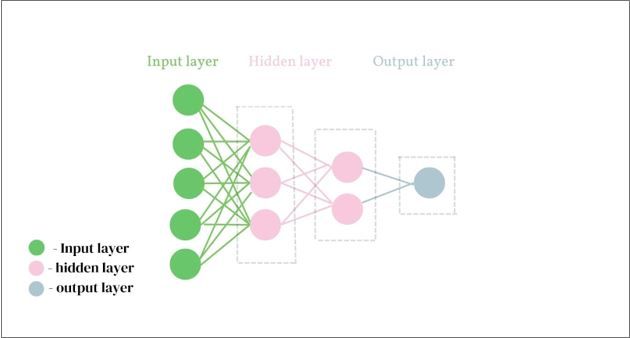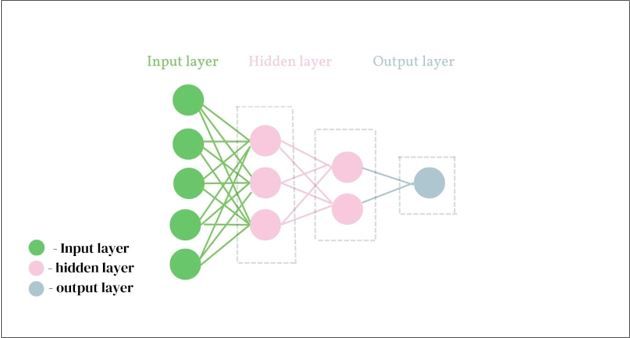Neural Networks: The Foundation and Future of AI

Over half a century ago, when the neural network was invented, we had no idea how it would help to shape our lives. Now, we can’t imagine living without neural networks working 24/7 on our devices. Neural networks are the foundation of AI, as well as its future, but what are the procedures they take to shape our daily lives?
Artificial intelligence is broadly considered the future of the present. Just like the industry in the 1800s and technology in the 1900s, AI could largely change the course of humanity. AI can be compared to the human brain because both are made up of separate cells or units called “neurons”. In AI, these neurons, or perceptrons, transmit data and information through tunnels of neurons called neuron networks. These networks are considered the foundation of AI, as well as its future.
The history of neural networks can be tricky to pinpoint, but the first artificial prototype has proven to be made at the hands of a research psychologist, Frank Rosenblatt, over half a century ago, in 1958. Born in 1928 and having graduated from the University of Cornell with an A.B and a well earned PhD in 1956, he was merely thirty years old when he stumbled upon this revelation. Rosenblatt named the artificial neural network (ANN) Perceptron. Indeed it was a fitting name, as the ANN was able to model the human brain and perceive visual data astoundingly.

The foundation for neural networks is a neuron, also known as a perceptron. These neural
networks consist of artificial neurons in three layers - the input layer, the hidden layer and the output layer. First of all, data from the outside world goes into the artificial neural network through the first layer - the input layer. This layer processes and analyses the data. Then, the data is transferred to the hidden layer. There can be several hidden layers in the network, with each layer analysing the input from the previous layer, and then transferring to the next layer. Finally, the output layer gives the final result of the data processed by the neural network.
The goal of using neural networks is to achieve the lowest level of error and the highest level of accuracy possible. This aspect of AI is responsible for many real-time situations that we are unaware of. When doctors need a medical diagnosis or scientists need to identify a chemical compound, neural networks are activated. Furthermore, ANNs are hard at work on our devices. Face recognition security systems, such as Face ID in iOS, use neural networks to recognise the owner's face and attributes, such as open eyes, glasses, and facial hair. Moreover, virtual assistants such as Siri, Alexa, and Google Assistant have neural networks that can recognise and analyse human speech despite the speaker's varying speech patterns, pitch, tone, language, and accent. In general, ANNs play an important role in AI, increasing its efficiency and making our work, and even our lives, less demanding in the future.
When Rosenblatt brought the perceptron to light, he also uncovered a new pathway for artificial intelligence to evolve into what it is now and what it would be in the future. Though these neural networks are complex, they hugely helped and would still help us to simplify our lifestyles. Neural networks can be considered one of the most revolutionary creations that go down in history; because though it is explored in present-day AI, they can and will help shape the future of AI too, which is certainly vast beyond our imaginations.
References
“Dr. Frank Rosenblatt Dies at 43; Taught Neurobiology at Cornell.” The New York Times, 13 July 1971, https://www.https://aws.amazon.com/what-is/neural-network/nytimes.com/1971/07/13/archives/dr-frank-rosenblatt-dies-at-43-taught-neurobiology-at-cornell.html. Accessed 3 August 2022.
Lefkowitz, Melanie. “Professor's perceptron paved the way for AI – 60 years too soon” Cornell Chronicle, 25 September 2019, https://news.cornell.edu/stories/2019/09/professors-perceptron-paved-way-ai-60-years-too-soon. Accessed 3 August 2022.
Sam. “6 Fields of AI.” Techemergent, https://techemergent.com/fields-of-ai/. Accessed 3 August 2022.
Velazquez, Rose, and McCarthy, John. “What Is Artificial Intelligence? How Does AI Work?” Built In, 28 July 2022, https://builtin.com/artificial-intelligence. Accessed 3 August 2022.
“What are Neural Networks?” IBM, 17 August 2020, https://www.ibm.com/cloud/learn/neural-networks. Accessed 3 August 2022.
“What is a Neural Network? AI and ML Guide” Amazon AWS, . Accessed 3 August 2022.
https://www.https://aws.amazon.com/what-is/neural-network/nytimes.com/1971/07/13/archives/dr-frank-rosenblatt-dies-at-43-taught-neurobiology-at-cornell.html. Accessed 3 August 2022.
Author Information:
Aminath Mishya Ahmed: Gn Atoll Education Centre, Fuvahmulah, Maldives.
Muan Mohamed Rasheed: Billabong High International School, Male, Maldives.
Aminath Saira Saeed: Billabong High International School, Male, Maldives.
Mishka Mohamed Mahdy: Maldives National University, Male, Maldives.
Magore Niyaz: Fairview International School, Malaysia.
Cite this article as:
Aminath Mishya Ahmed, Muan Moahmed Rasheed, Aminath Saira Saeed, Mishka Mohamed Mahdhy and Magore Niyaz, Neural Networks: The Foundation and Future of AI, theCircle Composition, Volume 3, (2022). thecirclecomposition.org/neural-networks-the-foundation-and-future-of-ai/
